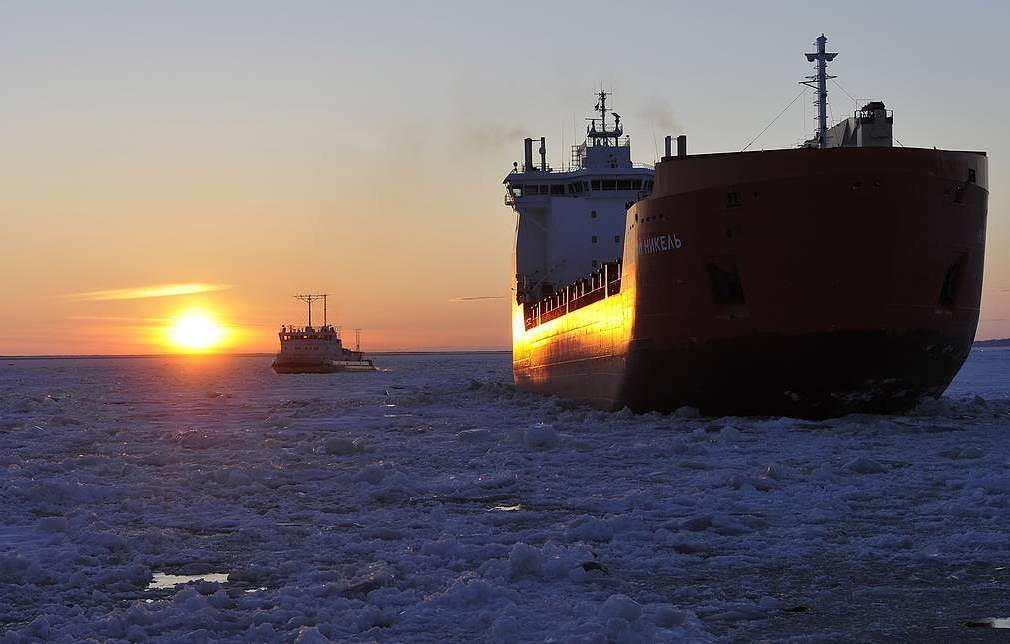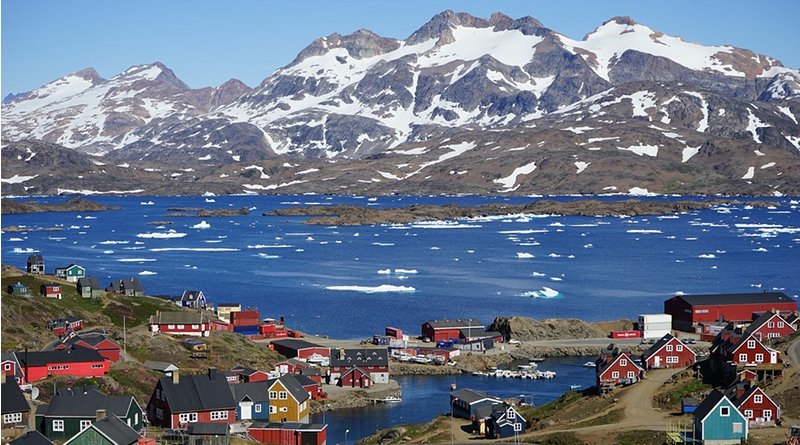First Published in Eurasia Review, 18 June 2021
The Arctic geopolitics has become one of the strategic policy planks of big powers. This has been reflected in the separate statements issued by the Russian President Vladimir Putin and the U.S. President Joe Biden after the US-Russia summit in Geneva on Wednesday. Putin told reporters that Moscow and Washington “should interact on issues related to the Arctic region.” He said:
Russia and the United States are among the eight members of the Arctic Council; Russia chairs the Arctic Council this year. Moreover…there is a strait between Alaska and Chukotka, the United States is on one side and Russia is on the other. All this together should push us to join efforts (The TASS News 16 June 2021).
Dismissing American “concerns about Russia’s alleged engagement in the militarization of the Arctic region,” Putin said:
We discussed this issue in a broad format and in some detail. This is a highly important and interesting issue as the development of the entire Arctic region and the Northern Sea Route in particular has tremendous economic significance for many countries in the region and beyond it. The US concerns regarding militarisation are absolutely groundless. We are not doing anything new there compared to the Soviet era. We are restoring the local infrastructure that was lost and demolished completely some time ago…. we are doing this using up-to-date technology. We are restoring the military and border control infrastructure, and we are creating nature conservation infrastructure, which has never been done in the past. We are creating a relevant base for the Emergencies Ministry, which will give us the opportunity to conduct high-seas rescue missions in case of emergency and to protect the environment (President of Russia, 16 June 2021).
Putin pointed out that Russia would be “ready to assist all the interested countries and companies in developing the Northern Sea Route.” He said that the navigation season in the region is much longer, and it “will become practically year-round due to climate change and as we launch our new icebreakers, including the Lider. Russia has the most powerful nuclear icebreaker fleet which is in high demand here” (Ibid). Putin also reminded that “the UN Convention on the Law of the Sea (UNCLOS) describes the legal regime in international waters, including internal waters, the inland sea, the territorial sea, the contiguous zone, the exclusive economic zone and the open high seas. An inland sea is located inside a country’s territory…” It is “covered by a special regime, and we don’t have to provide anyone with any privilege here…. It is our sovereign right to allow or not to allow foreign ships to sail there. But we do not abuse this right, and we grant free passage to everyone” (Ibid; The TASS News 16 June 2021).
President Biden in his press conference in Geneva said that “there is a long list of issues” they “spent time on” and this obviously included the question of the Arctic. Biden said that they discussed how both the U.S and Russia can ensure the Arctic as “a region of cooperation rather than conflict.” According to him, “I caught part of President’s —Putin’s press conference, and he talked about the need for us to be able to have some kind of modus operandi where we dealt with making sure the Arctic was, in fact, a free zone” (The White House, 16 June 2021).
A month before the U.S.-Russia summit, President Biden, addressing at the United States Coast Guard Academy’s 140th Commencement Exercises, said:
In the Arctic, the Coast Guard is the prow of American presence in the region, rapidly growing in strategic importance as ice recedes and new sea lanes open. We, the United States, are an Arctic nation, and the United States must demonstrate our leadership and engagement, our diplomacy, and our operational skill…. And we have to make sure that every country respects these international norms. So, we need them — we need modern ice breakers, yes, but just as critically, we need to stand shoulder-to-shoulder with those Allies and partners who share our values, including Indigenous communities who are the keepers of traditional knowledge about the Arctic waters (The White House 19 May 2021).
A day after Biden’s statement came the 12th Ministerial meeting of the Arctic Council which marked Russia assuming chairmanship of the Council. The Council meeting was held on 20 May 2021 in Reykjavik, Iceland. That was the time when Washington was set to begin a fresh round of campaign against Russian efforts to hold sway over the Arctic shipping lanes and reinstate a military component in the discussions underway over issues in the region. There were reports about the U.S. and its NATO allies’ opposition to Russia’s attempts to control Northern Sea Route. Moscow was, in fact, keen on resuming high-level military dialogues within the Council, but it got deferred following the Ukraine issue in 2014. Moscow was equally suspicious about NATO’s strategy in the Arctic.
At the Arctic Council foreign ministers meeting in Reykjavik, U.S. Secretary of State Antony Blinken said the Council should “focus on peaceful cooperation on environmental issues, maritime safety and the well-being of indigenous people in the region.” He told that “the Arctic is a region for strategic competition that has seized the world’s attention. But the Arctic is more than a strategically or economically significant region. It’s home to our people, its hallmark has been and must remain peaceful cooperation. It’s our responsibility to protect that peaceful cooperation and to build on it.” Blinken also underlined the importance of sustaining “effective governance and the rule of law” to ensure that the “Arctic remains a region free of conflict where countries act responsibly.” He had also challenged the legality of the proposed Russian maritime rules and expressed deep reservations about Russia’s military activity in the far North (ABC News 21 May 2021).
Russian Foreign Minister Sergey Lavrov challenged NATO’s “motives in deployments of bombers and submarines to the area.” He said: “It is therefore important to extend the positive relations we have within the Arctic Council to encompass the military sphere as well, first of all by revitalizing multilateral dialogue on military issues between the general staffs of the Arctic states.” Moscow’s anxieties also found expression in Lavrov’s statement on Norway. He said:
Our Norwegian neighbours, who have never had the principle of the permanent presence of foreign military personnel enshrined in their laws, are now amending their legislation… In fact, things are moving towards what US Secretary of State Antony Blinken once called “presence on a persistent rotational basis.” We see this presence in other parts of Europe as well… Mainly, we are worried about what is happening near our borders. Norway is our close neighbour with which we enjoy good relations. But the problems associated with the escalation of military and political tensions due to deployment of foreign troops in Norway and the Baltic states remain (Ministry of Foreign Affairs of the Russian Federation, 20 May 2021).
Earlier, Nick Paton Walsh (CNN) wrote that Russia was “amassing unprecedented military might in the Arctic and testing its newest weapons in a region freshly ice-free due to the climate emergency, in a bid to secure its northern coast and open up a key shipping route from Asia to Europe.” There were also concerns voiced by experts about Russian ‘super-weapon,’ the Poseidon 2M39 torpedo. Walsh said that this unmanned stealth torpedo was “powered by a nuclear reactor and intended by Russian designers to sneak past coastal defenses—like those of the U.S.—on the sea floor” (Nick Paton Walsh 2021). It was aimed “to deliver a warhead of multiple megatons, according to Russian officials, causing radioactive waves that would render swathes of the target coastline uninhabitable for decades.” Christopher A Ford—then assistant secretary of state for International Security and Non-Proliferation—was quoted saying that the Poseidon is designed to “inundate U.S. coastal cities with radioactive tsunamis.” Similarly, Vice Admiral Nils Andreas Stensønes, head of Norwegian intelligence was reported to have said that his agency had assessed the Poseidon as “part of the new type of nuclear deterrent weapons. And it is in a testing phase. But it’s a strategic system and it’s aimed at targets … and has an influence far beyond the region in which they test it currently” (Ibid).
According to Walsh, the Russian military build-up has been rivalled by NATO and U.S. troop and equipment mobilisation. For instance, the U.S. B-1 Lancer bombers positioned in Norway’s Ørland air base were completed missions in the eastern Barents Sea. The US military’s stealth Seawolf submarine was conceded by American officials as being in the area. A State Department official was reported to have told CNN: “There’s clearly a military challenge from the Russians in the Arctic,” including their refitting of old Cold War bases and build-up of new facilities on the Kola Peninsula near the city of Murmansk.” The senior official said, “That has implications for the United States and its allies, not least because it creates the capacity to project power up to the North Atlantic” (Ibid). Lt. Col. Thomas Campbell, a Pentagon spokesman, was quoted saying that “Russia is refurbishing Soviet-era airfields and radar installations, constructing new ports and search-and-rescue centers, and building up its fleet of nuclear-and conventionally-powered icebreakers.” “It is also expanding its network of air and coastal defense missile systems, thus strengthening its anti-access and area-denial capabilities over key portions of the Arctic,” he noted (Ibid).
Washington is evidently uneasy about Russia’s attempts to influence the Northern Sea Route—a shipping lane that stretches from Norway and Alaska, along Russia’s northern coast, across to the North Atlantic. The NSR is expected to reduce the travel time it presently takes shipping containers to reach Europe from Asia via the Suez Canal.
According to an official of the Ministry for the Development of the Russian Far East, the volume of cargo shipping along the NSR is expected to increase to 100 mln tonnes by 2030. Another Russian official said that “the NSR would be a more environmentally friendly route than transport routes located to the south, since Russia prioritizes the environmental safety of cargo transportation in the development of the Arctic route and focuses on ships using appropriate types of fuel” (TASS 12 May 2021).
In April this year, the Russian Defense Minister Sergei Shoigu said that Russia “will continue developing its military infrastructure in the Arctic and on the coast of the Arctic Ocean.” According to him, “It is important to say that the Northern Fleet is constantly practicing employing fighter aviation from the airfields of Arctic archipelagos. The military infrastructure continues to be developed on Arctic islands and the coastline of the Arctic Ocean” (TASS 20 April 2021).
Plausibly, the U.S. and the NATO allies are set to become increasingly active in the region. The U.S. contends that the Arctic is now caught in an economic and military competition from Moscow and Beijing. The emerging role of China in the region is also viewed with increasing suspicion, particularly after its proclamation of the Arctic Policy (The People’s Republic of China 2018). Beijing’s self-styled status as a “near-Arctic state” with its “Polar Silk Road” project raised new concerns in the West, particularly in the background of mounting tensions between the U.S and China (Seethi 2021).
Meanwhile, Moscow was increasingly worried about the attempts to make the region a potentially dangerous terrain of the West’s military exercises. The Russian Embassy in Washington said: “The Arctic Challenge military exercises involving the United States are “provocative,” “do not establish any framework for mutual trust in Europe, and contradict (the) peaceful and sustainable development of the Arctic region.” The drills are held twice a year under the auspices of Nordic Defence Cooperation, which included a contingent of 250 US Marines, ten F/A-18 Hornet multirole combat jets, as well as KC-130 tankers and transport aircraft. Defence Minister Sergei Shoigu said that a total of 40,000 troops and 15,000 pieces of weapons and equipment, including strategic aviation, were “concentrated near Russia’s borders in the west and south, even as the NATO reconnaissance flights had doubled in the first three months of 2021 compared to 2020” (Sputnik News, 8 June 2021).
It was in the background of big power games that Russia’s foreign minister, Sergei Lavrov said that “Russia controls the Arctic.” “It has been absolutely clear for everyone for a long time that this is our territory,” he said. A report in The Economist says:
Russian land makes up 53% of the Arctic coastline. Russia has also ramped up its military investment in the region: since 2007 at least 50 Soviet-era military outposts have reopened. But the other Arctic states see things differently. In 2018 NATO sent an aircraft carrier into the Arctic Circle for the first time in 27 years. Last year British and American warships entered the Barents Sea, north of Norway and close to Russia’s key naval bases, for the first time since the 1980s. Next year Norway will carry out its biggest military exercise inside the Arctic Circle since the cold war (The Economist 14 June 2021).
Looking at the Arctic geopolitics within a framework of big power rivalry, it is plausible to say, as a Carnegie Endowment paper underlined, that Moscow’s ambitious programmes in the Arctic amount to a renewal of its Cold War “posture centred around long-standing missions of protecting the sanctuaries of its ballistic missile submarine fleet and operations in the North Atlantic in the event of a war in Europe.” But the paper warns that “the Russian military is resuming these missions with fewer resources and facing a more formidable array of adversary capabilities than during the Cold War.”
This might again make a room for suspicion if the task before Moscow is to recoup economically capable partners like China in its Arctic geopolitical objectives. China—which is palpably worried about the Indo-Pacific strategy of the U.S. and its partners in a wider region—is all set to bolster its ‘Belt-Road Initiative,’ and the ‘Polar Silk Road’ is perceptibly Beijing’s dream project in the coming years. Russia’s chairmanship of the Arctic Council is therefore seen as a major challenge for other Arctic States like the U.S., Canada, Norway etc. with China emerging as an important stakeholder, if not a major rival, in the region.




